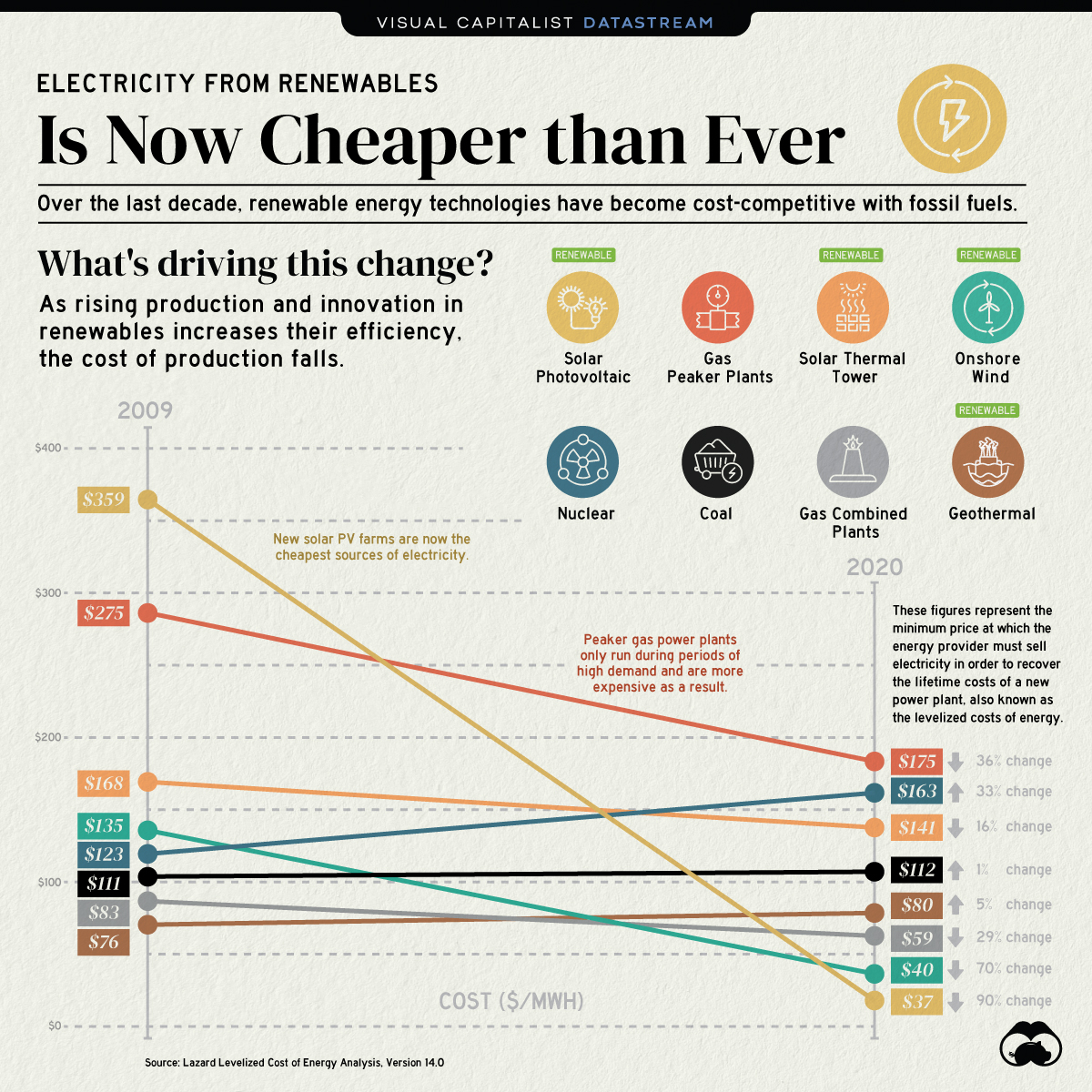Electricity From Renewables Is Now Cheaper

To use this visualization, go to The Visual Capitalist, download from there and give attribution.
The Briefing
- Electricity from new solar photovoltaic (PV) plants and onshore wind farms is now cheaper than electricity from new coal-fired power plants
- The cost of electricity from solar PV plants has decreased by 90% since 2009
The Transition to Renewable Energy Sources
Renewable energy sources are at the center of the transition to a sustainable energy future and the fight against climate change.
Historically, renewables were expensive and lacked competitive pricing power relative to fossil fuels. However, this has changed notably over the last decade.
Renewables are the Cheapest Sources of New Electricity
Fossil fuel sources still account for the majority of global energy consumption, but renewables are not far off. The share of global electricity from renewables grew from 18% in 2009 to nearly 28% in 2020.
Renewable energy sources follow learning curves or Wright’s Law—they become cheaper by a constant percentage for every doubling of installed capacity. Therefore, the increasing adoption of clean energy has driven down the cost of electricity from new renewable power plants.
Solar PV and onshore wind power plants have seen the most notable cost decreases over the last decade. Furthermore, the price of electricity from gas-powered plants has declined mainly as a result of falling gas prices since their peak in 2008.
By contrast, the price of electricity from coal has stayed roughly the same with a 1% increase. Moreover, nuclear-powered electricity has become 33% more expensive due to increased regulations and the lack of new reactors.
When will Renewable Energy Sources Take Over?
Given the rate at which the cost of renewable energy is falling, it’s only a matter of time before renewables become the primary source of our electricity.
Several countries have committed to achieving net-zero carbon emissions by 2050, and as a result, renewable energy is projected to account for more than half of the world’s electricity generation by 2050.
Where does this data come from?
Source: Lazard Levelized Cost of Energy Analysis Version 14.0, Our World in Data
Details: Figures represent the mean levelized cost of energy per megawatt-hour. Lazard’s Levelized Cost of Energy report did not include data for hydropower. Therefore, hydropower is excluded from this article.

